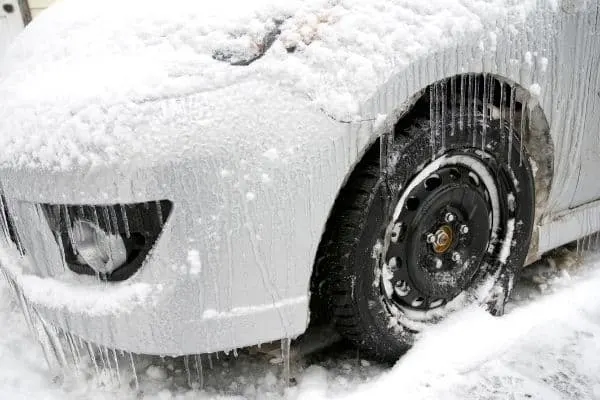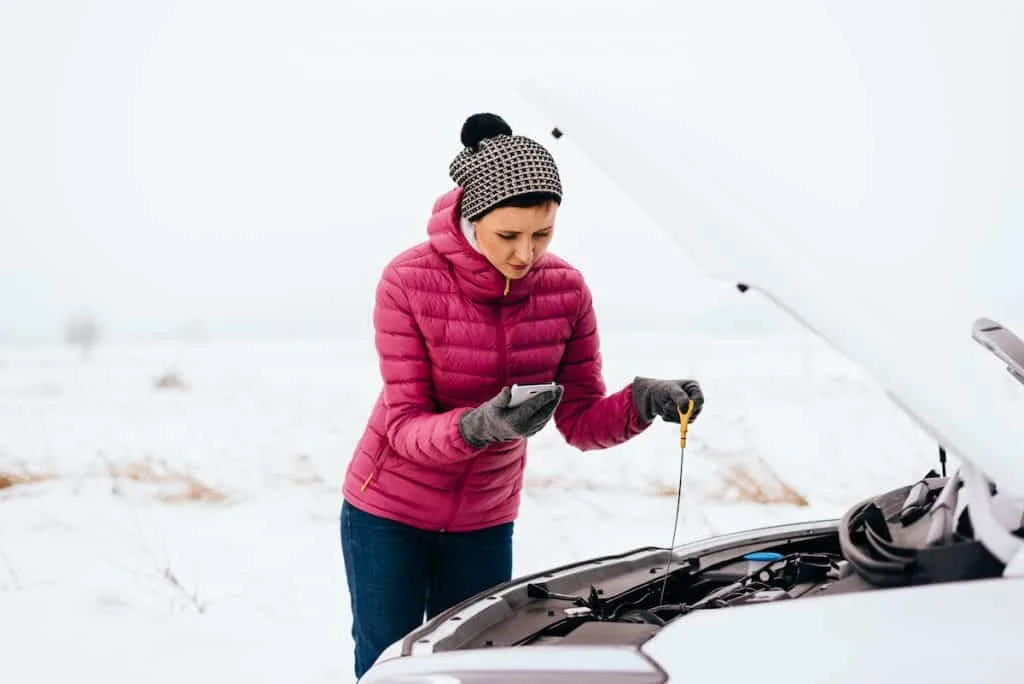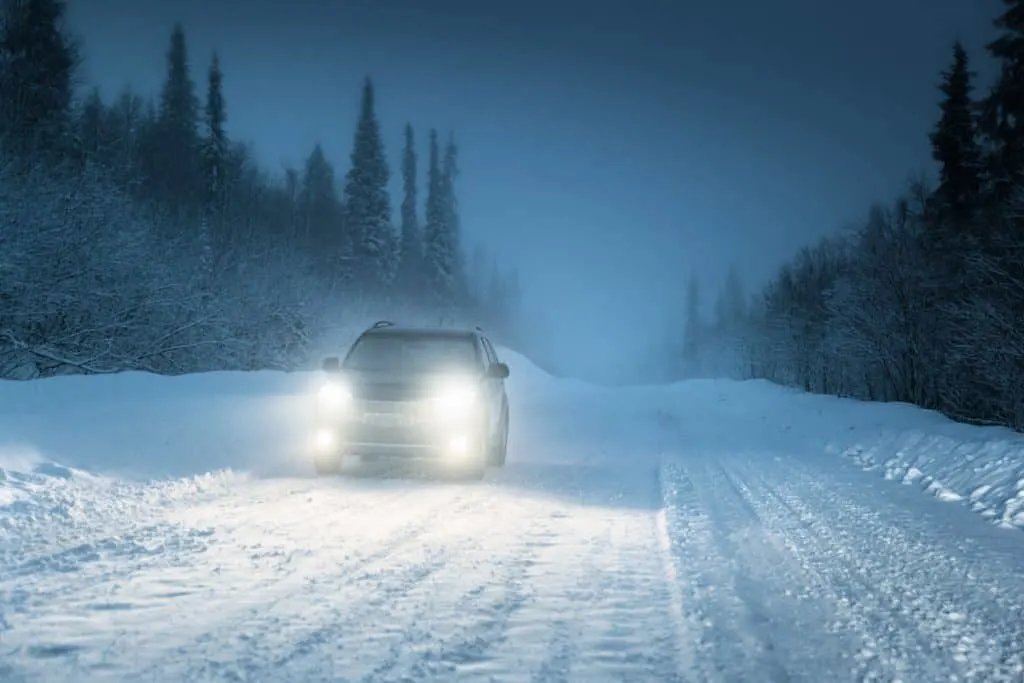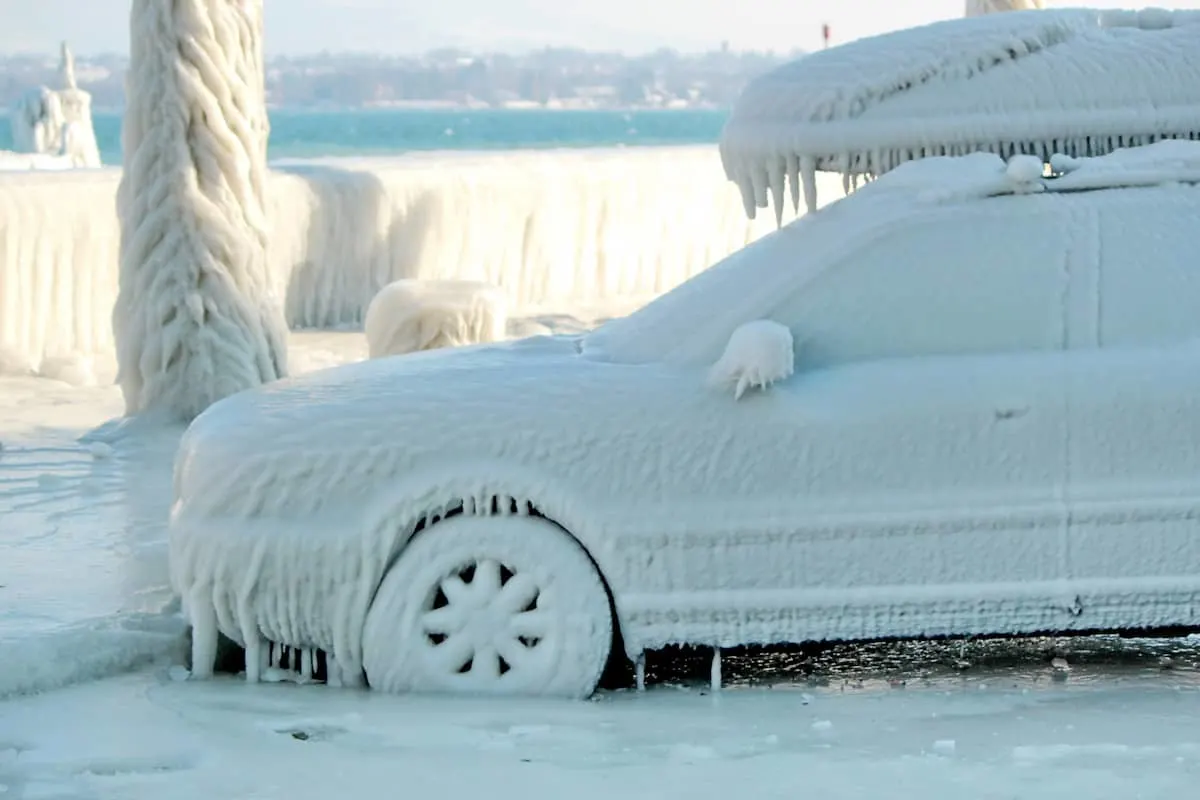Driving your vehicle in cold weather takes some getting used to. With the need to warm up the car, clear paths through snow or ice, and wait for the windows to clear up, there is a lot to do!
Unlike warm weather, which doesn’t require anything but open windows or a working air conditioner, there are issues that you need to prepare for and prevent when inclement weather starts hitting your area.
Bad weather can make it harder for your car to start, and if your car is not taken care of properly, you could end up with no way to get to wherever you need to be. Although you can’t do anything about the weather itself, there are ways to protect your vehicle so you don’t have any issues in the future.
So, what is the lowest temperature that a car will start in?
As long as the car’s battery has not been drained by the cold, and the fuel lines are not frozen (which can occur between -40 to -200 degrees Fahrenheit), then it’s highly likely that your car will start.
Also, taking care of your car during the winter will help it stay durable in the long run. So, we will cover the tips and tricks you should learn to start your car in cold weather, and so you will know when the temperature is too cold to make your car start.
Why Your Car Won’t Start
Cold temperatures affect cars in many ways, and although starting your car shouldn’t take a lot out of your vehicle, it does take a lot of work when the weather is colder.
The car battery needs to do the same process of powering the vehicle, but with less power due to the cold temperatures.
Cold batteries aren’t able to produce the same level of power as a warmer battery would, and this could make it difficult for your car’s electrical system to get the electricity it needs to turn on.
Also, cold temperatures can cause the oil in your tank to become thicker and not move around as well.
If your battery is already cold from sitting overnight in freezing temperatures, then the mix of low battery power and thick engine oil can result in your car not starting at all.
In rare cases, there could also be moisture in your fuel lines that could become frozen and block the flow of fuel.
Because gasoline is a mixture of different compounds, different components will start freezing anywhere from -40 to -200 degrees Fahrenheit.
Most of these components freeze around -100 degrees Fahrenheit, so it has to be REALLY cold to become an issue!

When Is It Too Cold to Drive Your Car?
Most cars can handle a lot of bad weather, but the engine oil, fuel, and battery can’t. Most cars are still able to start well under freezing temperatures, which start at 32 degrees Fahrenheit.
Depending on each individual car, the exact temperature varies. Some cars with more powerful engines that are maintained well can handle starting in zero-degree weather, while others would have trouble as soon as the thermostat hits freezing temperatures.
Some might even be able to start in well below zero temperatures, but it is affected by several different factors that make a car able to, or not.
However, though cars can start at these temperatures, it is much harder for them to do so. So, once freezing temperatures come in, you need to take precautions to ensure that your vehicle will be all right for the entire winter season.

How To Start The Engine When It Is Cold
As soon as cold temperatures start to hit, you want to begin taking special care of your car’s engine and battery to help avoid any issues with starting.
From doing routine maintenance as winter begins to use a different kind of oil for the winter, there are things you can do to keep starting issues from happening with your vehicle.
#1 – Lower Your Power Use
Because starting your car takes up a lot of power, you need to conserve as much as you can so it is focused on powering up.
This means that you will want to shut off the lights, heater, radio, and headlights.
This will give your battery a higher chance of being able to start the vehicle without needing to power up any other electrical system.
Once your car is turned on, you will want to allow the engine to run for a minute or two before turning on any of these systems again.
#2 – Dip Your Clutch
If your car is a stick shift, then a trick that might work is to dip your clutch while you turn on the vehicle.
This can help lower the battery power needed to start the car just enough to make it start better.
However, this is not something that can be done with an automatic vehicle. So, for those with a manual vehicle, you will not be able to try this trick.
#3 – Double-Check The Battery Leads
Since starting your car has a lot to do with your battery, it makes sense to check on the leads. You should see if they are in need of deep cleaning or if they are a bit loose and need to be tightened.
If the leads are loose then they could cause the current to stop flowing and prevent the car from starting. If they need to be cleaned, the crust that builds up around the lead could be causing the power to suffer.
Tightening the leads only needs to be done if you feel that they are loose. However, even if your leads are not that dirty, you should clean them off for the winter.
This will help your battery work its best without any interruptions. To clean the leads, remove them and use a blend of water and baking soda to scrub the area with a toothbrush.
Tip! It is important to remember that the leads should be taken off one at a time with the negative one last. When you replace them, the negative lead will also be attached last.
This will stop you from getting shocked by the current.
#4 – Fill Up On Oil
During the colder months, your engine oil can get thick and move less freely. This makes it harder for the battery to start the car because it is doing more of the job itself.
Filling up your oil will make it easier to power up. Not only can having low oil hurt the battery’s lifespan but if your oil is older, then it can cause your engine to not run as smoothly.
So, to keep your car starting up all winter, fill up at the beginning of the season to avoid tough startups and non-starts.
#5 – Get a Jumpstart
If you have tried all other options and found that nothing is working, you might need to get a jumpstart to finish the job.
This should be a last resort because hooking up the cables incorrectly could cause some damage.
But if you have done it before and feel confident doing it, then it can be a good option when nothing else works. However, just know that if this doesn’t work, you’re really out of luck.
How to Jumpstart Your Car
If you want to jumpstart your car but haven’t done it before, here is how to do it right.
- Take the red cable and attach it to the positive terminal on your battery and the end of the cable on the same terminal of the other car.
- Then, attach the black cable to the negative terminal of the other car, with the end attached to a metal surface – must be unpainted – on your car.
- Start the other car and let it run for a few minutes before you start your engine.
- Once your car is started, you are good to go!

How To Prevent Non-Starts
If you’d like to avoid the upsetting feeling of turning your car key without hearing the engine start, then you will want to take all the preventative measures you can to keep your car in good shape for the winter.
1. Change Out Your Battery
Your car battery will have to work a lot harder to start your car in the winter months, so if you’ve seen a slight drop in power recently or checked the voltage to find out that it’s low, you might want to switch out the battery.
This is not a cheap thing to do, especially if you have some power left in your current battery, but it will help you avoid mornings without a working car due to the cold.
2. Fill Oil Early And Often
Your engine works hard to start, and when your oil is low, it works even harder. If you see that your oil is getting low, you want to fill it up.
Doing this consistently will ensure that you have enough oil for those especially cold mornings. Plus, if you get in the habit of doing this, you will notice it more often and avoid many different issues.
Conclusion: How Cold Can Cars Operate
Wintertime in an area where temperatures hit freezing is rough on your vehicle in more ways than one. Cold mornings after a long night in the cool air can make your car start less efficiently.
With the help of these tips for starting and preventing non-starts, you can keep your vehicle from not starting up from the cold and help maintain its power for the rest of the season.
Frequently Asked Questions (FAQs)
What temp is too cold to start your car?
Most car manufacturers recommend that you start your car when the temperature is above -20°C (-4°F). Starting your car in colder temperatures may cause serious damage to your engine.
Is it OK to start a car in extreme cold?
Generally, most cars can be started in temperatures as low as -30°C (-22°F) without issue. However, it is not recommended to start a car in temperatures below -30°C (-22°F).
Will a car start in 0-degree weather?
It depends on the car and the condition of the battery. Some cars may start in 0-degree weather, but if the battery is old or weak, it may not have enough power to start in such low temperatures.
